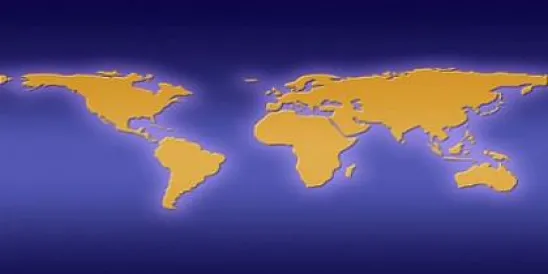The US is generally pretty keen on international free trade agreements. And why shouldn’t it be? After all, free trade agreements have the ability to open up foreign markets to US goods and services, allowing new and expanding opportunities for US companies. But “free trade” does not always mean “free trade” – it usually means “free-er trade, subject to numerous exceptions,” with the exceptions proving a constant irritant to our free trade partners. Case in point: two recent events – one in the European Union and one in Canada – demonstrate that “free trade” (subject to numerous caveats) is still a bone of contention, even among long-established trading partners. While “free-est trade” may be too much to ask for, maybe “free-er trade” with fewer strings attached would at least be a step in the right direction.
Recent Complaints by the European Union…
In a recent round of trade negotiations tied to the Transatlantic Trade and Investment Partnership (“TTIP”), the EU is asking that the US provide more access to State and local governments and that the US limit its use of certain contract types that are perceived as anti-competitive.
The US commonly uses task or delivery order contracts – referred to in the EU as “framework agreements” – under which the US awards a general contract for up to (typically) five years, and then issues individual orders under that contract for specific supplies or services. While US and EU companies both have an opportunity to compete for the initial general contract, the company that loses the contract is often effectively frozen out of subsequent orders for up to five years at a time. For many EU companies, being shut out like this for an extended period happens far too commonly, and the EU intends to ask the US government to reduce the length of these multi-year task or delivery order contracts in future TTIP negotiations to align with the EU-norm of a four year limit for framework agreements.
With regard to increased access to State and local procurements, the EU has a harder case to make. While many countries are able to negotiate trade agreements on behalf of their provincial or local governments, the United States is different. In our federal system, the US government negotiates free trade agreements on behalf of State and local governments only with the individual State’s permission. Functionally, this means that there is no single person within the US government who can negotiate or even guarantee increased access to State or local government procurements across the board, and for the US Trade Representative to address the issue comprehensively there must be buy-in from fifty different governments – a very difficult and time consuming process. Some State and local governments are included in existing US free trade agreements, and as we saw in 2009 and 2010 when Canada demanded increased access to US stimulus procurements by State and local governments, expanded access can be negotiated. The EU says it is ready to grant the US access to its local government procurements, provided the US does likewise. Just because it is difficult does not mean it is impossible, and EU negotiators hope to push through on this issue despite the difficulties.
Meanwhile, in Canada…
The EU does not just want improved access in US markets – it also wants access in Canada. As part of the “green energy boom” that many countries are promoting, the Canadian province of Ontario established a program to foster solar photovoltaic and wind power technologies. These programs included a domestic content requirement, which required a portion of the design and construction of these electricity generation facilities to satisfy certain “Buy Canadian” requirements. Facilities satisfying these requirements would qualify for guaranteed electricity prices offered under Ontario’s Feed-In Tariff (“FIT”) Programme.
Disappointed, the EU (later joined by the United States and others) complained to the World Trade Organization (“WTO”) in August 2011, arguing that these “Buy Canadian” pre-requisites violated certain provisions of the 1994 General Agreement on Tariffs and Trade (“GATT”) and the WTO Agreement on Subsidies and Countervailing Measures, both of which limit discriminatory treatment for foreign-made goods covered by the Agreements. The complaint was upheld in an initial December 2012 report, and in May 2013 a WTO appellate board largely affirmed the decision.
Where does this leave the Province of Ontario? Well, in full retreat, it would seem. In June 2013, Ontario announced that it would be changing its procurement rules to comply with the WTO ruling. Presumably this will mean that Ontario may eliminate (perhaps?) the “Buy Canadian” restriction, but we will have to wait and see exactly what this looks like when the final changes are issued. The experience in Ontario demonstrates well what happens when trading (and treaty) partners implement these kinds of “Buy Local” policies – while guaranteed to be popular at home, they are not guaranteed to be legal in this era of free-er trade. The US has a somewhat-similar domestic preference in place for purchases of photovoltaic devices by the US Department of Defense. See DFARS 225.7017 and 252.225-7017. We have discussed this US-based restriction here and here. So why is the US restriction legal when the Canadian restriction is not? Because the US photovoltaic restriction expressly recognizes that it must be implemented in a manner that is consistent with US obligations under the various US free trade agreements.
But beyond the legality of such “Buy Local” restrictions, there is the inevitable diplomatic escalation they can trigger – inviting countermeasures in response. We have discussed this escalation before, and it seems that these policies rarely breed much more than hostility and resentment. Sometimes they can prompt more ambitious changes, resulting in broader free trade agreements and greater access for companies in foreign markets. This was the case with the expanded Canada-US agreement signed in February 2010, allowing greater access to local government procurements.
Conclusion
Negotiations to resolve these kinds of trade issues typically move at a glacial pace. But stand by. If one of the hallmarks of the Obama administration is to be increased trade and increased access to overseas markets, it just might be that the US government will be more willing to strike new deals than in years past. Even if the TTIP does not achieve truly “free” trade, certainly the incentive is there to do whatever both sides can to free us from the transatlantic economic doldrums that have persisted the last several years since the onset of the global downturn.




 />i
/>i

